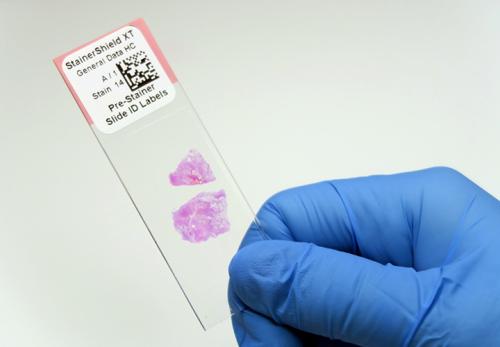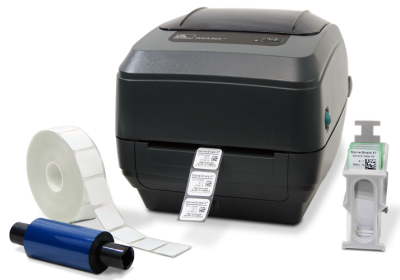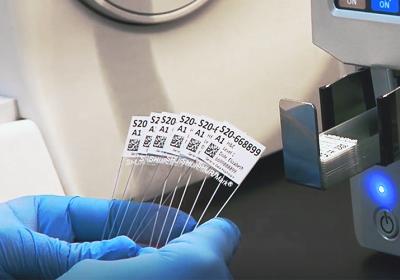When evaluating any xylene-resistant label for use on the slides that your lab produces, be sure to ask the following questions:
- What type of xylene exposure is the slide label resistant to? Vapors or full immersion?
- What is the maximum xylene exposure time the slide label can withstand?
- Is any special handling required? (ie. do not touch the printed area until dry or smearing will occur)
And the most important question to ask is: Will the slide label be able to withstand ALL of the different chemicals, stains and other processes involved with all of the tissue preparation protocols used in your lab? For most labs considering using a simple xylene-resistant label for their slide labeling, the answer is usually no.
Lab managers need to know that their slides can be tracked from start to finish, and they are providing their histotechs with the best products to make that happen. Histotechs need to know that they will incur as few problems as possible, and that the lab products they use will withstand all the different tissue preparation protocols they use every day. They need a slide label that is quick and easy to apply, stays on the slide, and scans every time.
StainerShield XT slide labels have been proven to stand up to most every concentration and type of harsh chemical, stain, heat, cold, and pressure used to prepare tissue specimen slides in a histology lab. These include:
- Complete immersion of the label in xylene for over four hours
- Staining in an automated stainer with all types of H&E and special histology stains for extended protocols
- Temperature extremes, including three minutes in a 1350-watt microwave at full power and 24 hours in a -65 degrees Centigrade freezer
- Pressurized units used in combination with high pH buffers, such as Decloaking Chambers and PT Units, including 45 minutes in a 125 degrees Centigrade Pascal unit
In all instances, the StainerShield XT label survived the process, did not absorb any stain, remained on the slide, could be handled immediately after the process without smearing, and registered a successful scan every time.
Reliable Slide Labeling In Your Histology Lab with StainerShield XT
Don’t settle for just a xylene-resistant label. Histology labs need more. And StainerShield XT has you covered – for every process and protocol in your lab. Want to learn more about slide labeling with StainerShield XT slide labels? Visit the StainerShield XT slide labels page, call General Data at 1-844-643-1129, or send an inquiry through our website.



